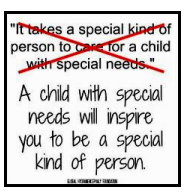Questões de Vestibular Sobre inglês
Foram encontradas 5.992 questões

Disponível em:<https:letras.mus.br><.letras.mus.br>jackson-five>. Acesso em: 19 mar. 2017.

SERIOUS injury could occur if the following safetyprecautions are not
observed. Disponível em:<http://www.marpokinetics.com/pdf/vmx_manual.pdf>

SERIOUS injury could occur if the following safetyprecautions are not
observed. Disponível em:<http://www.marpokinetics.com/pdf/vmx_manual.pdf>

Adapted from The Economist, January 24, 2015.

Adapted from Natural History, March 2015.

Adapted from Natural History, March 2015.

Adapted from Natural History, March 2015.

Adapted from Natural History, March 2015.


I. Os times de competidores foram premiados pelo aperfeiçoamento de aparelhos. II. O invento de Pryor e Azodi derrotou sete outros competidores na disputa. III. Pryor e Azodi venceram dois prêmios universitários pela criação de “SignAloud”. IV. “Use it” premia inovações tecnológicas elaboradas por alunos de graduação.
Assinale a alternativa correta.


I. “contain sensors that record movement and send data wirelessly” II. “cost about $ 100, are lightweight and compact” III. “have medical potential to help stroke victims during rehabilitation” IV. “use video input for gesture”
Assinale a alternativa correta.
Com base nas expressões retiradas do texto, considere as afirmativas a seguir.
I. A expressão “a flash of brown lightning” enfatiza a velocidade da movimentação dos esquilos.
II. A frase “I’ll have you!” indica que a personagem havia decidido previamente qual esquilo escolheria.
III. Ao utilizar a frase “You watch”, o enunciador destaca uma habilidade permanente do enunciatário, no caso, a habilidade de olhar.
IV. Em “Her head must have sounded quite hollow”, o trecho sublinhado indica que o enunciador tem certeza de que sua afirmação é a verdade.
Assinale a alternativa correta.
( ) Medidas de proteção aos tubarões foram discutidas no Canadá e na reunião da CITES, indicando que há interesse pela conservação dos oceanos.
( ) Um plano para patrocinar as reservas florestais para proteção dos tigres incluiu o envio de mensagens a milhares de pessoas, na esperança de conseguir apoio financeiro.
( ) Os treze países que abrigam populações de tigres uniram esforços para demarcar uma reserva internacional para preservação desses mamíferos.
( ) A esperança de recuperação da população de rinocerontes, abatidos por causa de seus chifres, pode estar no nascimento de três filhotes de fêmeas que foram realocadas.
( ) Duas ações visaram à proteção dos elefantes na Tailândia: o envio de uma petição ao governo tailandês, exigindo o fim do comércio de marfim, e a celebração de uma cerimônia budista em homenagem aos elefantes mortos.
Assinale a alternativa que contém, de cima para baixo, a sequência correta.
Leia o infográfico a seguir e responda à questão.

(EDMONDS, K. Report Back: your action against Illegal Wildlife Trade. In WWF-Canada Blog. 16 abr. 2013. Disponível em: <http://blog.wwf.ca/blog/2013/04/16/report-back-your-action-against-illegal-wildlife-trade/>. Acesso em: 23 jul. 2016.)
I. O uso dos termos grifados demonstra que o enunciador está surpreso com a ação efetuada.
II. Os termos grifados acrescentam ênfase ao ineditismo da celebração budista e equivalem, em português, ao termo “primeiríssima”.
III. Os termos grifados modificam o grupo nominal “Buddhist merit-making cerimony”.
IV. A expressão grifada poderia ser substituída, sem alteração de sentido, pela expressão “the very first”.
Assinale a alternativa correta.
Leia o infográfico a seguir e responda à questão.

(EDMONDS, K. Report Back: your action against Illegal Wildlife Trade. In WWF-Canada Blog. 16 abr. 2013. Disponível em: <http://blog.wwf.ca/blog/2013/04/16/report-back-your-action-against-illegal-wildlife-trade/>. Acesso em: 23 jul. 2016.)











(source: https://br.pinterest.com/pin/444167581971867250/, accessed in Septmber/2016.)
Qual das frases a seguir melhor resume a mensagem do texto acima?









